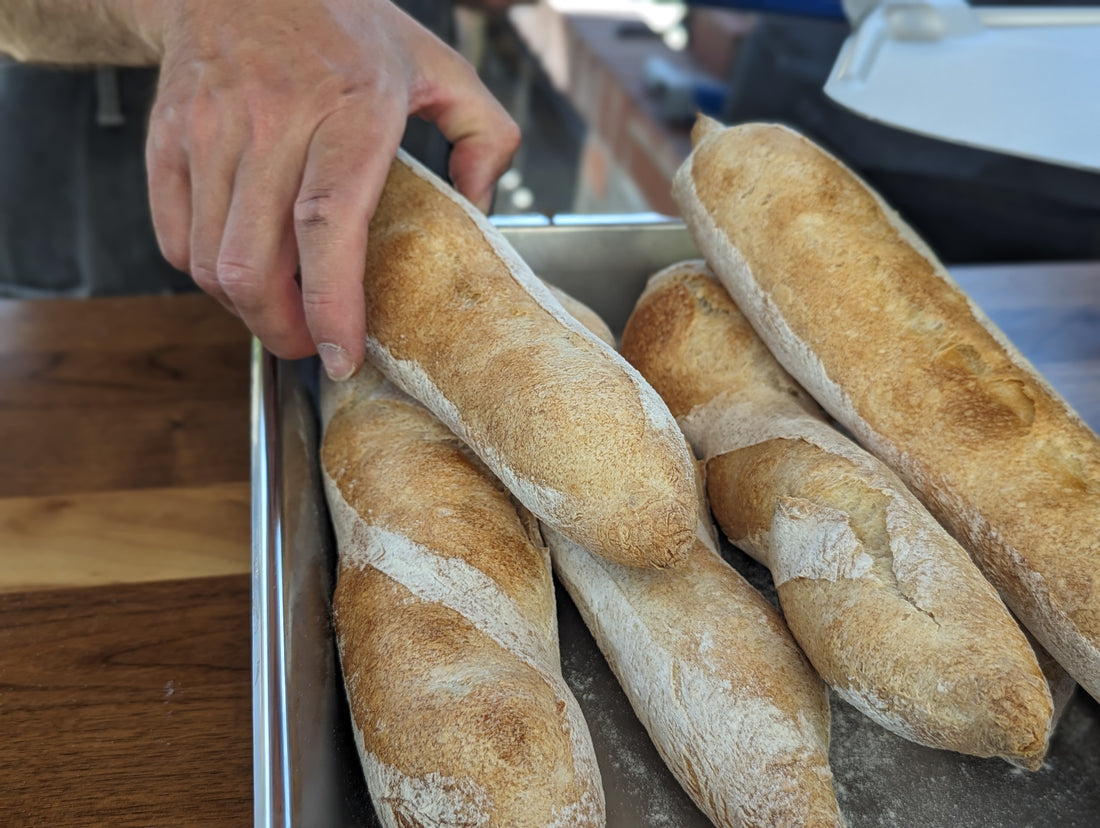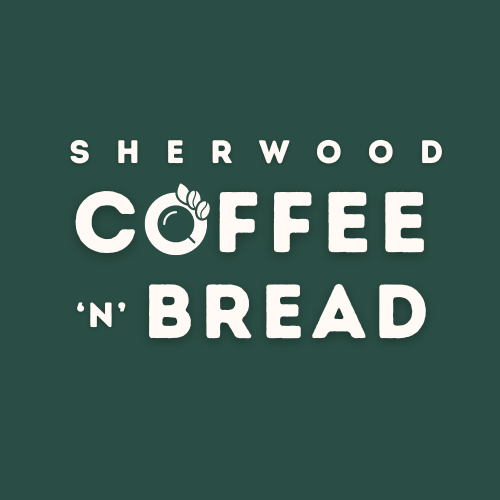
Baguette 101: The Ultimate Beginner's Guide to Baking Perfect Baguettes
Share
Welcome to the most comprehensive guide for baking your first (or best) baguette! If you're a beginner wondering about flour types, dough techniques, shaping, and baking tips, this guide covers everything you need to know, from preparation to troubleshooting.
1. Flour Selection for Baguettes

Which Flour is Best for Baguettes?
The ideal flour for baguettes is bread flour or high-protein all-purpose flour. These flours have a protein content of 11-12%, which helps create the classic chewy texture and open crumb.
Examples of Good Flours:
- King Arthur Sir Galahad Flour (11.7% protein) – A popular choice for artisan baking.
- Bob’s Red Mill Artisan Bread Flour (12% protein) – Reliable and widely available.
- King Arthur Unbleached All-Purpose Flour (11.7% protein) – Works well if bread flour isn’t available.
Can I Use All-Purpose Flour Instead of Bread Flour?
Yes! Use unbleached all-purpose flour with a protein content of around 11%. Avoid bleached flour, as it weakens gluten structure.
What is the Protein Content I Should Look For?
Aim for a protein content of 11-12% for a balance of strength and chewiness. Higher protein develops more gluten, which is essential for structure and texture.
Choosing the Right Flour
The type of flour makes a big difference in your baguettes’ texture and flavor. For a detailed guide on the best flours to use, check out Best Flour for Baguettes: Tips for Perfect Artisan Bread.
2. Dough Preparation: Poolish and Mixing

What is a Poolish, and Why Should I Use It?
A poolish is a pre-ferment made with equal parts flour and water, plus a pinch of yeast. It improves the flavor, texture, and aroma of your baguettes.
Benefits of a Poolish:
- Flavor: Adds complexity and a slight tanginess.
- Texture: Creates a more open crumb and chewier crust.
- Shelf Life: Helps the bread stay fresh longer.
How Do I Make a Poolish for Baguettes?
-
Ingredients:
- 100g flour
- 100g water (room temperature)
- ⅛ teaspoon instant yeast
-
Instructions:
- Mix all ingredients in a bowl until combined.
- Cover with plastic wrap or a damp cloth.
- Let ferment at room temperature (70°F-75°F) for 12-16 hours.
Try an Easy Baguette Recipe
Ready to bake with poolish? Follow our Easy Baguette Recipe with Poolish to create bakery-quality baguettes with minimal effort. It’s the perfect recipe to practice your new skills!
What’s the Difference Between Using a Poolish and a Straight Dough Method?
-
Poolish Method:
- Mixes a pre-ferment the night before.
- Pros: Richer flavor and better texture.
- Cons: Requires more time and planning.
-
Straight Dough Method:
- Mixes all ingredients at once.
- Pros: Faster and simpler.
- Cons: Less flavor complexity.
How Long Should I Let the Poolish Ferment?
Let it ferment for 12-16 hours until bubbly and slightly domed.
How Do I Know When My Poolish is Ready?
It should be:
- Bubbly and domed on top.
- Jiggly when you move the bowl.
- Fragrant with a sweet, yeasty aroma.
How Much Water Should I Use to Achieve the Right Dough Hydration?
For baguettes, aim for 70-75% hydration.
- Example: For 1000g flour, use 700-750g water.
How Do I Mix and Knead Baguette Dough Properly?
-
Combine Ingredients:
- Poolish, additional flour, water, salt, and yeast.
-
Initial Mix:
- Stir until all flour is incorporated.
-
Stretch-and-Fold Method:
- Let the dough rest 20 minutes.
- Stretch one side and fold it over the center. Rotate 90° and repeat.
- Perform 3-4 sets of stretch-and-folds every 15-20 minutes.
3. Fermentation and Proofing

How Long Should I Let My Dough Rise?
Let it rise for 1-2 hours during bulk fermentation, folding it every 30 minutes.
What is Bulk Fermentation, and How Do I Do It Correctly?
Bulk fermentation is the dough's first rise. Cover the dough and let it rest, folding every 30 minutes.
How Can I Tell if My Dough is Properly Proofed?
Use the poke test:
- Gently press the dough. If it springs back slowly, it’s ready.
Should I Refrigerate My Dough Overnight (Cold Proofing)?
Yes! Cold proofing for 8-12 hours enhances flavor and makes shaping easier.
How Do I Avoid Over-Proofing My Dough?
Check it regularly with the poke test. Over-proofed dough won’t spring back.
4. Shaping and Scoring

How Do I Shape the Dough Into a Baguette?
- Flatten dough into a rectangle.
- Fold the top and bottom thirds inward.
- Roll into a log, tapering the ends.
What’s the Best Way to Score a Baguette?

Use a sharp lame or razor blade. Make 4-5 diagonal cuts along the length.
Why Do I Need to Score the Dough?
Scoring allows the dough to expand properly in the oven.
How Can I Prevent My Dough From Deflating When Shaping or Scoring?
Handle the dough gently and avoid pressing out too much gas.
5. Baking Baguettes

What Oven Temperature Should I Use?
Bake at 475°F - 500°F (245°C - 260°C).
How Do I Create Steam in My Oven?
Place a pan in the oven. Add 1 cup boiling water or ice cubes when the dough goes in.
How Long Should I Bake My Baguettes?
Bake for 10 minutes with steam and 10-15 minutes without steam. Total time: 20-25 minutes until golden brown.
How Do I Know When My Baguettes Are Done?
Tap the bottom, they should sound hollow.
What’s the Best Way to Cool Baguettes?
Cool on a wire rack for 20-30 minutes.
6. Troubleshooting Common Issues
Why Are My Baguettes Dense?
- Under-proofed dough.
- Not enough hydration.
Why Didn’t My Baguettes Develop a Crispy Crust?
- Not enough steam.
- Oven not hot enough.
Why Did My Baguettes Spread Out?
- Over-proofed dough.
- Poor shaping technique.
Why Do My Baguettes Taste Bland?
- Short fermentation.
- Not enough salt.
How Do I Prevent Sticking?
Use parchment paper or semolina flour on your peel.
Ready to Take Your Baguette Skills to the Next Level?

If you’re inspired to improve your baguette-making skills, why not join one of our hands-on baguette baking classes at Sherwood Coffee 'n' Bread? Located in Albuquerque, our classes are perfect for beginners and experienced bakers alike.
What You’ll Learn in Our Classes
- Expert Guidance: Work alongside skilled instructors who’ll walk you through every step, from mixing dough to scoring and baking.
- Hands-On Experience: Practice techniques like shaping and scoring to achieve bakery-quality baguettes.
- Freshly Baked Results: Enjoy the satisfaction of taking home your own warm, freshly baked baguettes.
Why Choose Sherwood Coffee 'n' Bread?
Our classes are:
- Interactive: Small group settings for personalized attention.
- Fun: A great way to meet fellow baking enthusiasts.
- Informative: Learn the science behind baking and how to troubleshoot common issues.
Book Your Class Today!
Ready to master the art of baguette baking? Visit our Baguette Baking Class page to check availability and reserve your spot. Bread Baking Classes fill up quickly, so don’t miss out!
You now have everything you need to bake perfect baguettes. Remember, practice makes perfect.
